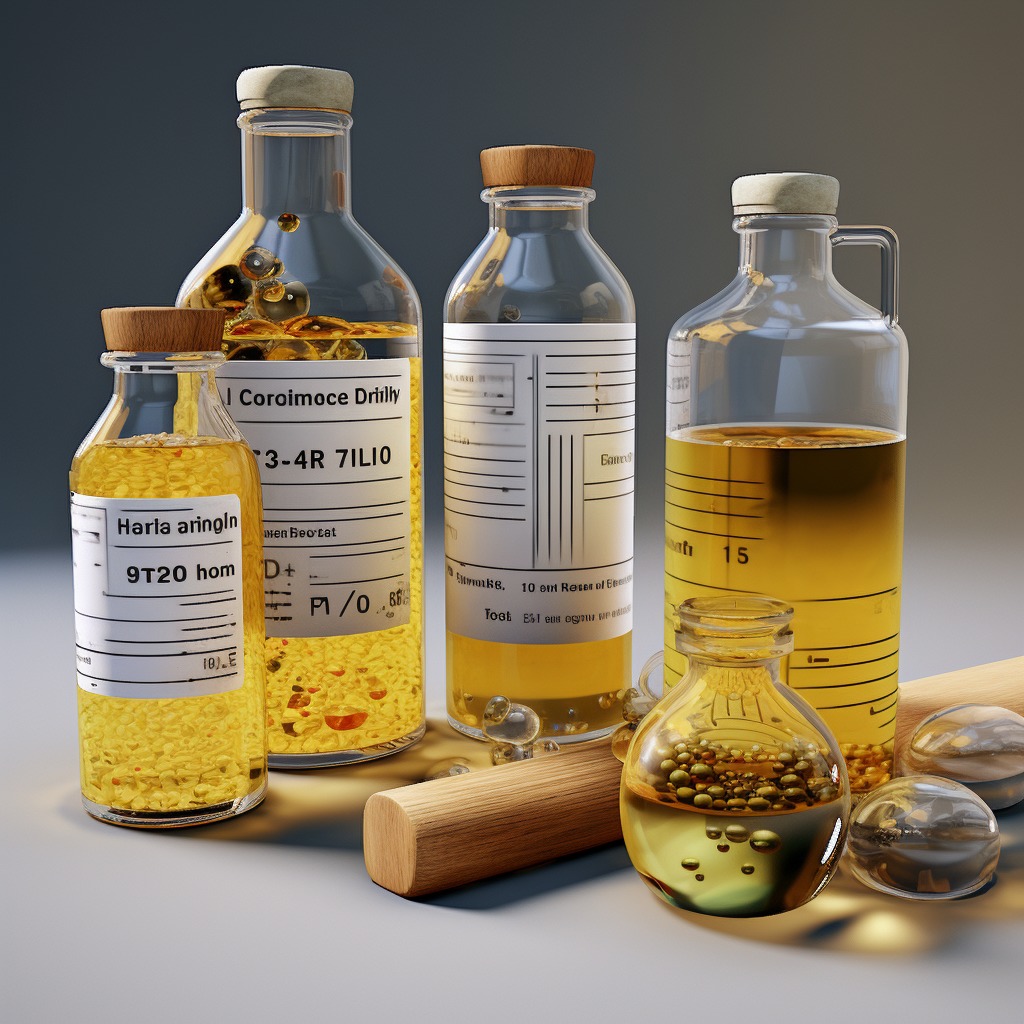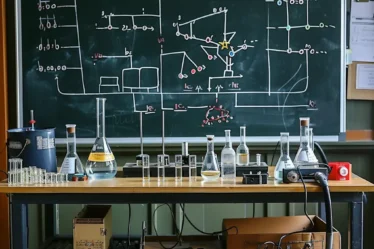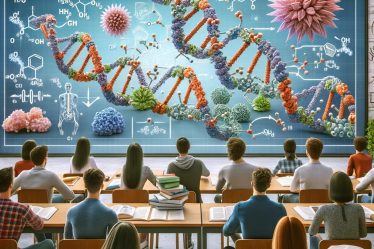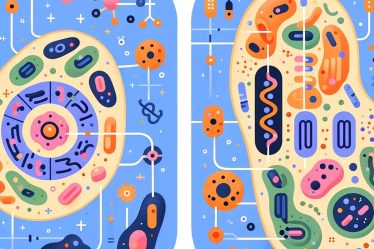
Lipids are a fascinating and diverse group of organic compounds that play critical roles in biological systems and have various industrial applications. Far from being just ‘fats,’ lipids are complex molecules with unique chemical structures and functions. This guide aims to provide an in-depth understanding of the chemistry behind lipids, making it an invaluable resource for students, tutors, and anyone interested in chemistry classes.
Here’s a glimpse of what you’ll learn:
- Chemical structure of lipids
- Types of lipids and their functions
- Chemical reactions involving lipids
- Lipids in industrial applications
So, let’s delve into the fascinating world of lipids and explore their significance beyond the common perception.
Want to expand your chemistry horizons? Our World of Chemistry offers a plethora of free educational blogs.
Discover your ideal chemistry tutor at meet’n’learn and skyrocket your understanding to new heights!
Unlocking the Chemical Structure of Lipids: A Deep Dive
Understanding the chemical structure of lipids is the first step in appreciating their diverse roles and functions. Whether you’re a student looking to excel in your chemistry classes or a tutor preparing educational material, this section will provide you with the foundational knowledge you need.
Fatty Acids and Glycerol: The Building Blocks
The most basic components of lipids are fatty acids and glycerol. Fatty acids are long hydrocarbon chains with a carboxyl group at one end. Glycerol, on the other hand, is a simple polyol compound. These two components can combine to form various types of lipids.
Saturated vs. Unsaturated: A Tale of Bonds
Fatty acids can be either saturated or unsaturated, depending on the types of bonds between the carbon atoms in the hydrocarbon chain. Saturated fatty acids have only single bonds, making them more compact and solid at room temperature. Unsaturated fatty acids contain one or more double bonds, introducing kinks that prevent tight packing, resulting in a liquid state at room temperature. (1)
Amphipathic Nature: The Best of Both Worlds
Some lipids, like phospholipids, are amphipathic, meaning they have both hydrophilic and hydrophobic regions. This unique property allows them to form structures like lipid bilayers, which are essential in biological membranes.
Introduction to the Periodic Table and Functional Groups in Organic Chemistry.
Table showing common types of fatty acids:
| Type of Fatty Acid | Number of Double Bonds | Examples | Common Sources |
|---|---|---|---|
| Saturated | 0 | Palmitic acid, Stearic acid | Animal fats, Palm oil |
| Monounsaturated | 1 | Oleic acid | Olive oil, Avocado |
| Polyunsaturated | 2 or more | Linoleic acid, Alpha-linolenic acid | Fish oil, Flaxseeds |
Types of Lipids and Their Functions: An Exhaustive Exploration
Lipids are a diverse group of biomolecules with a range of functions that extend far beyond mere energy storage. This chapter delves into the various types of lipids and their unique roles, making it an indispensable read for students, tutors, and anyone enrolled in chemistry classes.
Introduction to Proteins, Peptide Bonds and Carbohydrates.
Triglycerides: The Energy Reservoirs
Triglycerides are the predominant form of lipids in nature and act as the primary energy storage molecules in organisms. Comprising a glycerol backbone and three fatty acid chains, triglycerides are hydrolyzed to release fatty acids, which are then oxidized to produce energy. This process is especially vital during periods of fasting or intense physical activity.
Fats: More Than Just Solid Triglycerides
Fats are a specialized form of triglycerides that are solid or semi-solid at room temperature. They primarily comprise saturated fatty acids, contributing to their solid state. In contrast, oils are triglycerides that remain liquid at room temperature due to their higher content of unsaturated fatty acids. Both fats and oils are crucial for energy storage and insulation.
Phospholipids: The Architects of Cell Membranes
Phospholipids are indispensable for the formation of cell membranes. Structurally similar to triglycerides, phospholipids have one fatty acid chain replaced by a phosphate group. This unique structure grants them amphipathic properties, enabling them to spontaneously form lipid bilayers that act as selective barriers in cellular membranes.
Steroids: The Chemical Messengers
Steroids are a unique class of lipids characterized by a carbon skeleton consisting of four fused rings. They function primarily as signaling molecules and include vital compounds such as cholesterol, which is a component of cell membranes, and hormones like testosterone and estrogen that regulate a variety of physiological processes.
Waxes: The Unsung Heroes of Protection
Waxes are esters formed from long-chain alcohols and fatty acids. Solid at room temperature, waxes serve as protective barriers in plants and animals, shielding them from environmental hazards like water loss and microbial invasion. (2)
Bullet list highlighting key functions of various lipids:
- Energy Storage: Triglycerides and Fats
- Cell Membrane Architecture: Phospholipids
- Chemical Signaling: Steroids
- Environmental Protection: Waxes
Discover the chemistry behind Water, Photosynthesis, and Water Pollution
Chemical Reactions Involving Lipids: The Transformations
Chemical reactions involving lipids are crucial for biological and industrial applications. This chapter aims to shed light on these transformations, offering valuable insights for students, tutors, and anyone interested in chemistry lessons.
Hydrolysis of Triglycerides: Breaking Down for Energy
Hydrolysis is a fundamental biochemical reaction where triglycerides are cleaved into glycerol and fatty acids. Enzymes like lipase catalyze this process, and it occurs in the presence of water. Hydrolysis is crucial for mobilizing stored energy in organisms. During energy demand periods, triglycerides stored in adipose tissue are hydrolyzed, releasing fatty acids that are then transported to various tissues for oxidation and energy production.
Saponification: The Science Behind Soap
Saponification is the alkaline hydrolysis of triglycerides, resulting in the formation of glycerol and soap. While this reaction is central to soap production, it has broader applications in the chemical industry. For instance, it’s used in preparing textile softeners and as a step in biodiesel production. The alkaline conditions are usually provided by sodium hydroxide (NaOH) or potassium hydroxide (KOH).
Hydrogenation: The Formation of Trans Fats
Hydrogenation involves the addition of hydrogen atoms to unsaturated fatty acids, effectively converting them into saturated fatty acids. Metals like nickel or platinum often catalyze this reaction. While hydrogenation can improve the stability and shelf-life of oils, it can also lead to the formation of trans fats. These trans fats have been linked to various health issues, making the reaction a subject of scrutiny.
Oxidation: The Deterioration Process
Oxidation of lipids can lead to both beneficial and detrimental effects. On one hand, the oxidation of fatty acids is a vital metabolic pathway for energy production. On the other hand, lipid oxidation can lead to rancidity in food products, affecting flavor and nutritional value. This reaction is generally catalyzed by external factors like light, heat, or metal ions and involves the removal of electrons from the lipid molecules. (3)
Discover the fundamentals of Electrochemistry, Redox Reactions, and Balancing Chemical Equations.
Lipids in Industrial Applications: A Multifaceted Utility
Lipids are not confined to biological systems; their unique properties make them invaluable in various industrial applications. Whether you’re a student, a tutor, or simply someone interested in the practical aspects of chemistry, this chapter will broaden your understanding of how lipids are utilized in the industry.
Lipids in Detergents and Emulsifiers
Detergents and emulsifiers often employ lipids, specifically fatty acid salts or esters, as active ingredients. These lipids can surround and isolate grease and oil particles, enhancing the cleaning action. In emulsifiers, lipids stabilize mixtures of oil and water, making them indispensable in products like mayonnaise and salad dressings.
Use in Cosmetics and Pharmaceuticals
In the cosmetic industry, lipids such as waxes and oils are prized for their moisturizing and emollient properties. They form a protective barrier on the skin, preventing moisture loss. In the pharmaceutical sector, lipids serve as carriers for drug delivery. They can encapsulate drugs, improving their solubility and bioavailability, crucial for poorly soluble medications in water.
Biofuels: The Renewable Energy Source
Biofuels derived from lipids, particularly triglycerides, are emerging as a sustainable alternative to fossil fuels. These biofuels are produced through transesterifying triglycerides, resulting in biodiesel and glycerol. Lipid-based biofuels are considered more environmentally friendly, as they are biodegradable and produce fewer greenhouse gas emissions than traditional fossil fuels.
Need help with biology topics? Explore our extensive collection of biology educational blog posts designed to simplify complex concepts for you. Whether it’s photosynthesis, osmosis, the intricacies of green algae, understanding bacteria and viruses, or delving into the fascinating world of genetics and cells, our resources have got you covered. Expand your knowledge and enhance your learning journey with us today.
The Crucial Role of Tutors and Tutoring in Chemistry
Understanding the intricacies of lipids and their chemical reactions can be challenging. This is where tutors and tutoring sessions become invaluable. A skilled tutor can break down complex concepts into digestible pieces, providing personalized guidance and hands-on lessons that textbooks or lectures often can’t offer.
Whether you’re a student aiming for academic excellence or an enthusiast eager to delve deeper into the world of chemistry, tutoring can significantly enhance your learning experience.
Are you looking for a chemistry tutor? Enter “chemistry tutor Glasgow” or “chemistry teacher Sheffield” on your preferred tutoring platform, such as meet’n’learn, to find a teacher who can meet your specific needs.
If you thrive in group learning environments, search “chemistry classes London” or “chemistry lessons Manchester” online to discover local schools offering chemistry lessons.
How a tutor can help Make Science Fun.
The Multifaceted World of Lipids
In this comprehensive guide, we’ve explored the diverse types of lipids, their unique chemical structures, and their vital roles in biological systems and industrial applications. From energy storage in triglycerides to cellular architecture in phospholipids and chemical signaling in steroids, lipids are indispensable molecules with far-reaching implications.
This blog is an essential resource for students, tutors, and anyone interested in enriching their understanding of chemistry. The complex world of lipids is a testament to the fascinating and intricate nature of chemistry, a subject that continues to captivate and challenge us.
Check out 8 Exciting Science Experiments for Kids and unravel The Greatest Discoveries in Biology.
Frequently Asked Questions About the Chemistry of Lipids
1. What is the primary chemical difference between saturated and unsaturated fatty acids?
The primary chemical difference lies in the types of bonds between the carbon atoms in the hydrocarbon chain. Saturated fatty acids have only single bonds, while unsaturated fatty acids contain one or more double bonds.
2. How do phospholipids form cellular membranes?
Phospholipids have an amphipathic nature, meaning they have both hydrophilic and hydrophobic regions. This allows them to spontaneously form lipid bilayers, with the hydrophilic “heads” facing outward and the hydrophobic “tails” facing inward, creating a barrier that serves as the cellular membrane.
3. What is the role of lipids in soap making?
In soap making, a process known as saponification occurs where triglycerides are hydrolyzed in an alkaline solution to form glycerol and soap. The soap molecules have a hydrophilic and hydrophobic end, which allows them to emulsify fats and oils.
4. What Determines the Melting Point of Fats and Oils?
The melting point of fats and oils is primarily determined by the degree of saturation of their fatty acids. Saturated fatty acids have higher melting points and are usually solid at room temperature, while unsaturated fatty acids have lower melting points and are typically liquid.
5. How Do Phospholipids Form Micelles?
Phospholipids can form micelles due to their amphipathic nature. In an aqueous environment, the hydrophilic “heads” of the phospholipids face outward, interacting with water, while the hydrophobic “tails” are sequestered in the center, away from water. This arrangement minimizes the system’s free energy and is thermodynamically favorable.
6. What Role Do Steroids Play in Cell Membranes?
Steroids like cholesterol are important components of cell membranes. They modulate the fluidity and mechanical properties of the membrane, making it neither too rigid nor too fluid. Steroids help maintain the membrane’s integrity and functionality.
Discover your ideal chemistry tutor at meet’n’learn and skyrocket your understanding to new heights!
References:
1. Wikipedia
2. Britannica
3. LibreTexts



